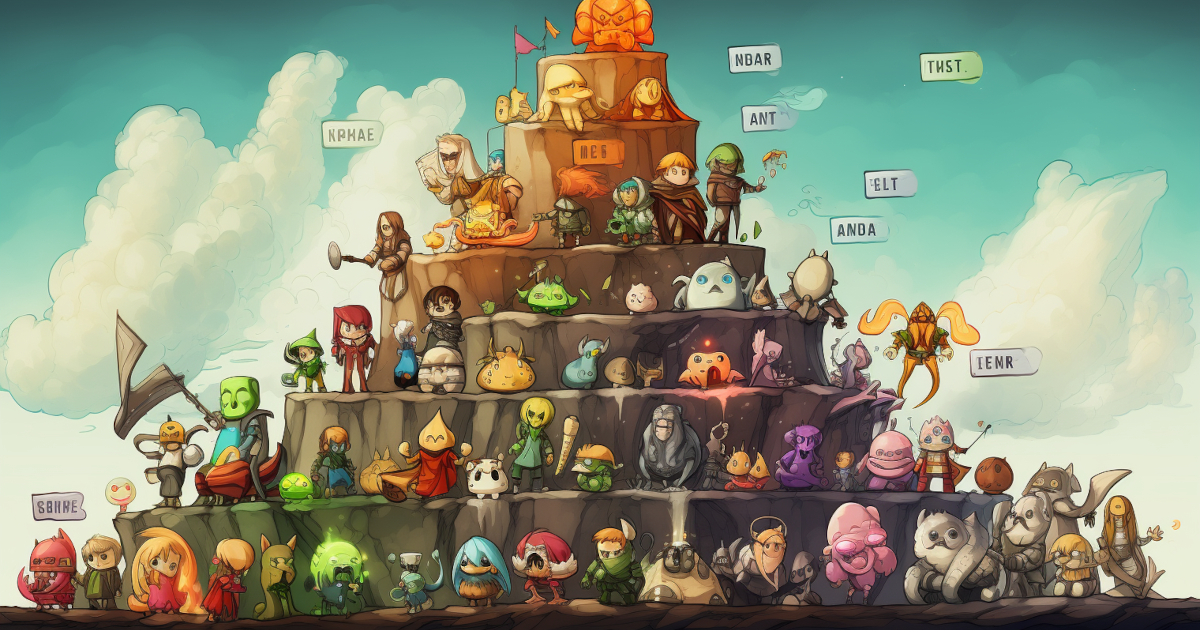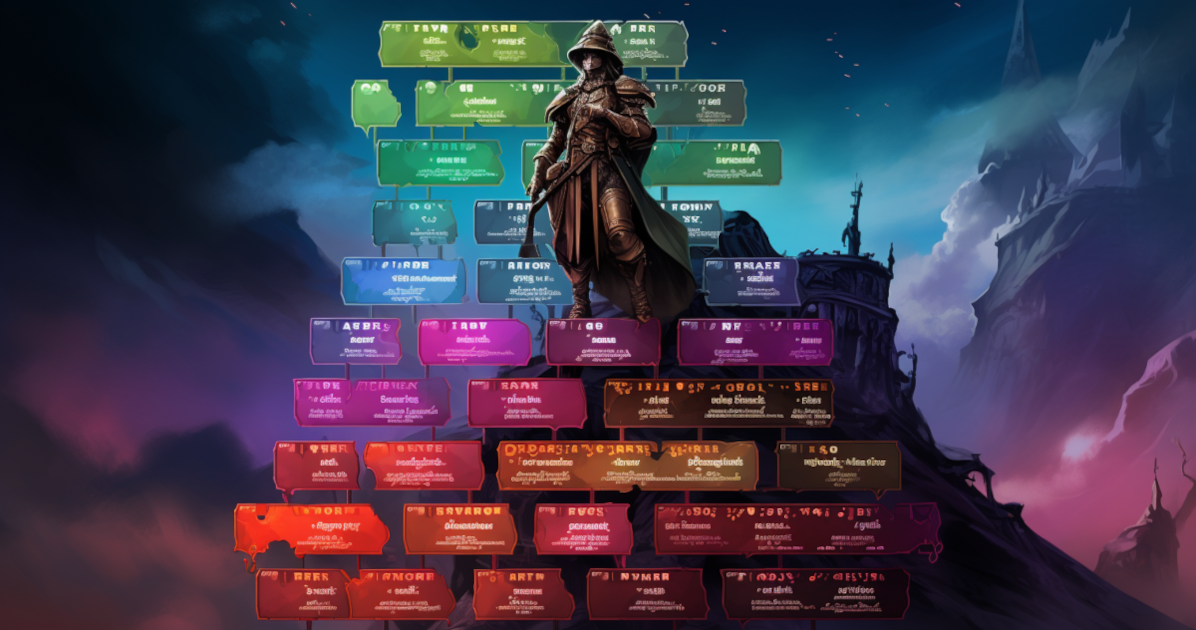Creating Your Own Tier List

Crafting your own tier list can be both fun and informative. In this guide, we'll walk you through the essential steps to create a tier list that is accurate, meaningful, and visually engaging.

Creating a tier list is a rewarding venture that allows you to categorize and rank items, characters, or concepts based on specific criteria. Whether you’re a gamer aiming to evaluate the strengths of video game characters, a foodie looking to rank your favorite dishes, or a movie buff wanting to assess cinematic classics.
Selecting a Topic
The journey of crafting a tier list begins with the crucial step of selecting a suitable topic. Your choice of subject matter should align with your interests, expertise, and the intended purpose of the list. Here’s how to make a well-informed selection:
-
Consider Your Passions: Start by thinking about your hobbies and interests. Choosing a topic that you’re passionate about will keep you motivated throughout the tier list creation process.
-
Identify Your Purpose: Clearly define why you’re creating the tier list. Are you providing guidance to others, sparking discussions, or simply organizing your own preferences? Identifying your purpose will help you narrow down your topic.
-
Ensure Data Availability: Check if there’s enough data or information available for your chosen topic. Adequate information is essential for making informed rankings.
-
Define the Scope: Determine the scope of your tier list. Are you ranking items from a specific time period, genre, or category within your chosen topic?
By carefully considering these factors, you’ll be well-prepared to make an informed decision when selecting your tier list topic.
You can read my Popular Topics for Tier Lists post to get inspired.
Gathering Data and Information
Once you’ve chosen your topic, the next crucial step is thorough research and data collection. This phase is essential to ensure the accuracy and comprehensiveness of your tier list. Here’s how to go about it:
-
Identify Reliable Sources: Begin by identifying credible sources of information related to your topic. This could include books, articles, websites, reviews, or even personal experiences.
-
Collect Relevant Data: Gather data that directly aligns with your chosen ranking criteria. For instance, if you’re creating a tier list for video game characters, collect data on their abilities, strengths, weaknesses, and popularity.
-
Organize Your Data: Develop a structured system to organize the data you’ve collected. Spreadsheets, databases, or dedicated software can help keep your information manageable and accessible.
-
Cross-Verify Information: Verify the accuracy of your data by cross-referencing multiple sources. Reliable information is the foundation of a trustworthy tier list.
Investing time and effort into gathering accurate and relevant data ensures that your tier list is well-informed and credible.
Establishing Clear Criteria
The establishment of clear and transparent criteria is essential for creating a coherent and meaningful tier list. Your criteria serve as the basis for ranking items, characters, or concepts. Here’s how to establish them effectively:
-
Alignment with the Topic: Ensure that your criteria closely align with the topic you’ve selected. If you’re ranking movies, your criteria might include factors like plot, acting, cinematography, and overall impact.
-
Quantifiable Measures: Whenever possible, use quantifiable measures to rank items. This could involve numerical ratings, scores, or percentages, depending on your topic.
-
Weighting of Criteria: Consider assigning different weights to various criteria based on their importance. Some factors may carry more weight in the overall ranking than others.
-
Minimize Ambiguity: Craft your criteria in a way that minimizes subjectivity and ambiguity. Clear and specific criteria make it easier to assign ranks.
-
Transparency is Key: Be transparent about your criteria and communicate them clearly to your audience. Transparency helps your audience understand how you arrived at your rankings.
By setting up clear and well-defined criteria, you’ll create a tier list that is logical, consistent, and capable of standing up to scrutiny.
Organizing and Assigning Ranks
With your data, criteria, and topic in place, it’s time to organize and assign ranks to the items on your list. Effective organization enhances the usability and impact of your tier list. Here’s how to approach this critical phase:

-
Create Tiers: Divide your list into tiers, typically labeled from S (the highest) to F (the lowest), or using any other appropriate labels. Tiers provide a clear hierarchical structure for your rankings.
-
Categorize Items: Group items within each tier based on their rankings. Items with similar rankings belong to the same category within the tier.
-
Visual Presentation: Consider using visuals such as tables, charts, or graphics to present your tier list in an easily digestible format. Visual elements enhance the accessibility of your rankings.
-
Provide Context: Offer brief explanations or justifications for your rankings. Context helps your audience understand your thought process and the factors influencing your rankings.
-
Iterate and Revise: Don’t be afraid to revisit and revise your tier list as needed. Over time, your insights may evolve, and rankings may change based on new information or experiences.
Assigning ranks requires a deep understanding of your criteria and the items being ranked. It’s the phase where your tier list takes shape and becomes a valuable resource.
Utilizing Tools and Software
Numerous tools and software options are available to streamline the tier list creation process. These resources can assist you in data organization, ranking assignment, and visual presentation. Here are some options to consider:
-
Spreadsheets: Applications like Microsoft Excel or Google Sheets are versatile tools for organizing data and creating basic tier lists.
-
Dedicated Tier List Generators: Explore dedicated tier list generator websites and software that provide templates and customization options tailored to tier list creation.
-
Graphic Design Software: If you’re aiming for a visually appealing tier list, graphic design software like Adobe Illustrator or Canva can help you create stunning visuals for your rankings.
-
Online Templates: Many websites offer pre-designed tier list templates that you can customize to suit your needs, saving you time and effort.
-
Community Tools: Consider joining online communities related to your topic. These communities often have tools and resources for creating tier lists specific to your area of interest.
Choosing the right tools and software depends on your comfort level, technical skills, and the complexity of your tier list project. At this point it also makes sense to think How to Prepare an Engaging Tier List.
Conclusion
Crafting your own tier list is an enjoyable and educational undertaking that allows you to categorize and rank items, characters, or concepts according to your unique criteria. Whether you’re a gaming enthusiast, a pop culture connoisseur, or simply someone who loves to organize information, following these steps will help you create a tier list that is accurate, meaningful, and visually engaging. With clear criteria, careful data collection, and effective organization, your tier list will provide valuable insights to both you and your audience. So, embark on your tier list creation journey, and let your rankings reflect your unique perspective and expertise.


